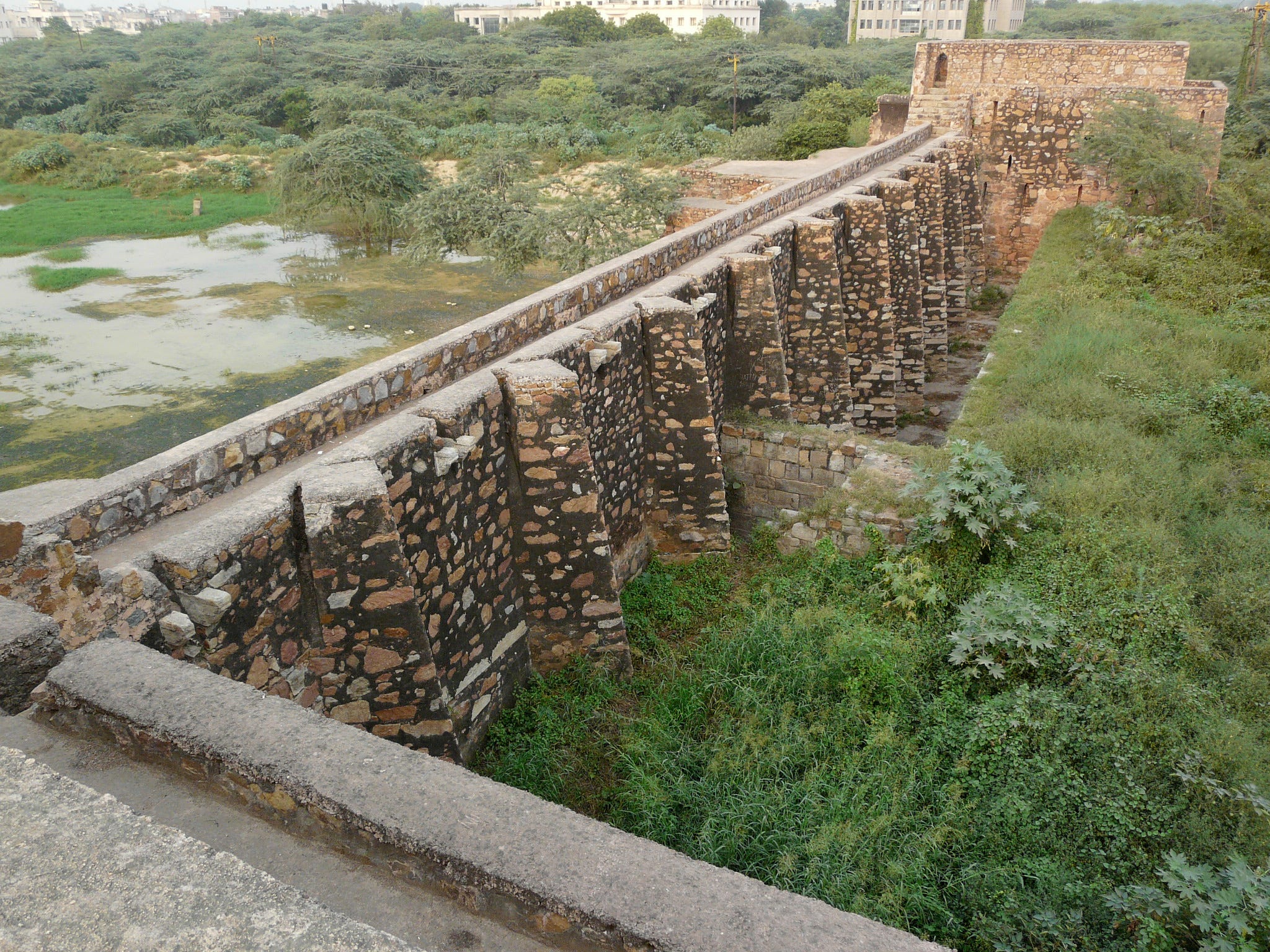Hidden gems of Delhi’s architecture lie in the heart of India’s bustling capital, amidst modern skyscrapers and busy streets. These hidden gems, often overshadowed by the contemporary cityscape, whisper tales of centuries gone by, holding the secrets of Delhi’s storied history. From the formidable Feroz Shah Kotla Fort to the intricate beauty of Khirki Mosque, and the timeless grandeur of Satpula Bridge, each site is a hidden gem offering a journey into the rich past of this ancient metropolis. Join us as we explore these hidden gems, each one a testament to the enduring legacy of this historic city.

One of the oldest hidden gems in Delhi, Feroz Shah Kotla Fort was built by Sultan Feroz Shah Tughlaq in 1354. The fort boasts magnificent gardens, mosques, and palaces within its complex. The entrance features a gigantic iron gate bearing the ruler’s name, and the fort’s walls stand as high as 15 meters. Though many structures within the fort are in ruins, the stepwell (baoli) remains in good condition. An interesting feature of this hidden gem is the Ashokan Pillar, which Feroz Shah brought from Ambala to Delhi. This fort is truly one of Delhi’s remarkable hidden gems.

The Masjid was built between 1351–54 by Khan-i-Jahan Junan Shah, the prime minister of Feroz Shah Tughlaq, the third ruler of the Tughlaq dynasty in Delhi. Feroz Shah is known for his keen interest in architecture, especially mosques, and his patronage of several building and conservation projects. In his autobiography Futuhat-i-Firozshahi, he writes, “Among the many gifts which God bestowed upon me, his humble servant, was a desire to erect public buildings. So, I built many mosques and colleges and monasteries”.

Satpula literally means ‘seven bridges’ and is rightly named as it is built upon seven arches. The main structure is very much intact and the seven arches are clearly visible. Built by Muhammad Bin Tughlaq to tap the local stream feeding on river Yamuna, the stone masonry is distinct and the structure, well planned.
Below the arches are the water tunnels which have been damaged. There is no way to go down to them unless you approach them from the grazing ground. On each end of the tunnels is a subsidiary opening. Two octagonal bastions stand at the ends of this two-storey high structure.

Mirza Ghalib’s Havelis located in the Old Delhi and is a heritage site declared by Archaeological Survey of India. It offers an insight into the Mirza Ghalib’s lifestyle and architecture of the Mughal Era. The large compound of the Haveli with columns and bricks are the reminiscence of the Mughal Empire in Delhi. The walls are adorned with the huge portrait of the poet and his couplets which are hung around the side walls. After the takeover by the Delhi government the haveli was made into a permanent memorial museum housing objects related to the poet and his times. It also houses various hand written poems by the poet besides his books.

Agrasen ki Baoli aka Ugrasen ki Baoli stands in the heart of Delhi as a souvenir left behind by time. This ornate stepwell, which was once a water reservoir, is an exquisite example of splendid architecture and ancient engineering skills. One of the oldest monuments and the best-preserved stepwell in Delhi, it now serves as a prime attraction for tourists and photography enthusiasts visiting the national capital. Its silent walls, forlorn steps, and stone arches narrate the tale of its erstwhile grandeur and glory.

The Bara Gumbad was constructed in 1490 CE, during the reign of the Lodhi dynasty. Its construction is generally attributed to Sikandar Lodhi, and it is believed to have the earliest constructed full dome of any building in Delhi. It is speculated that the Bara Gumbad was constructed to provide a gateway to the nearby mosque or a large walled enclosure. Although the structure does not house any tomb, there is a platform in the central courtyard that suggests the structure to be a burial place. The purpose Bara Gumbad is unknown.

Jahaz Mahal is located next to Hauz-i-Shamsi in Mehrauli, Delhi on its northeastern corner. It was so named since its reflection in the surrounding reservoir looked like a ship floating on a lake. It is inferred to have been built during the Lodi dynasty period as a pleasure resort, Sarai or an inn.




1 comment
Discover the hidden architectural gems of Delhi! 🏰 From the majestic Feroz Shah Kotla Fort to the intricate Khirki Mosque, each site tells a story of Delhi’s rich history. Join us on this journey through time! 🕌 #Delhi #Architecture #History 🌟